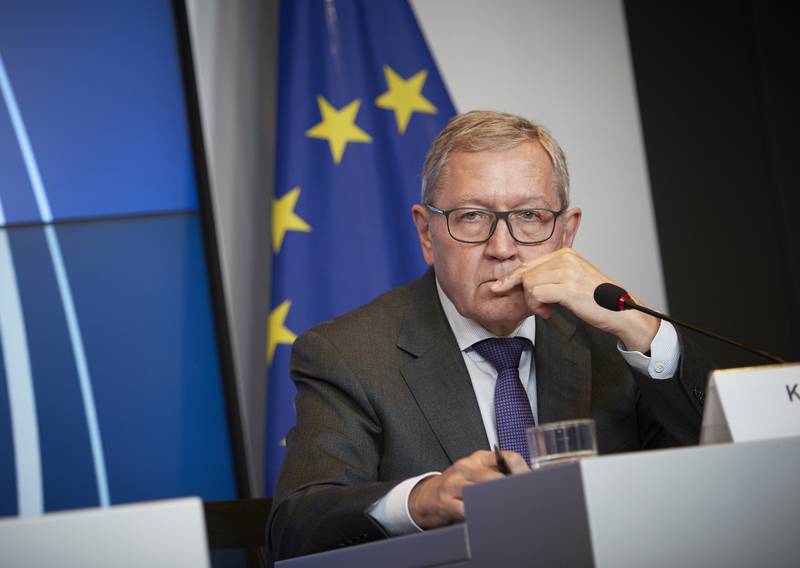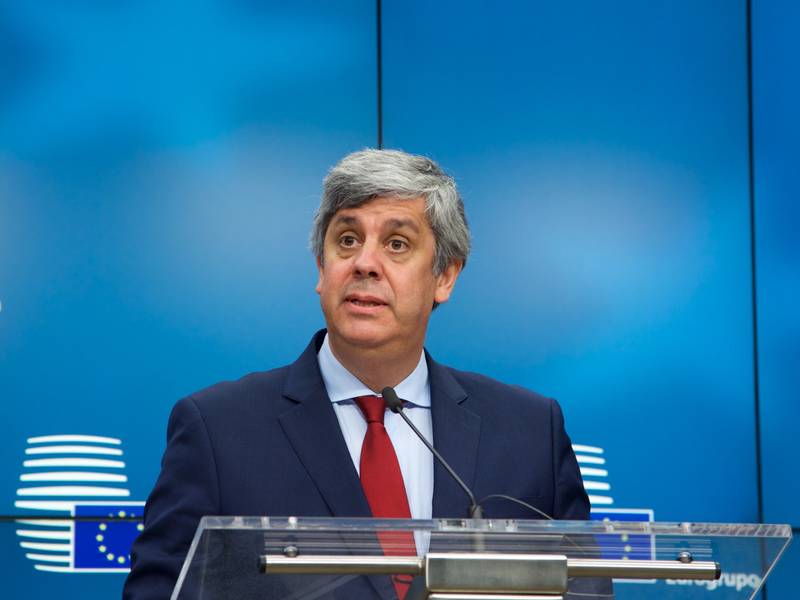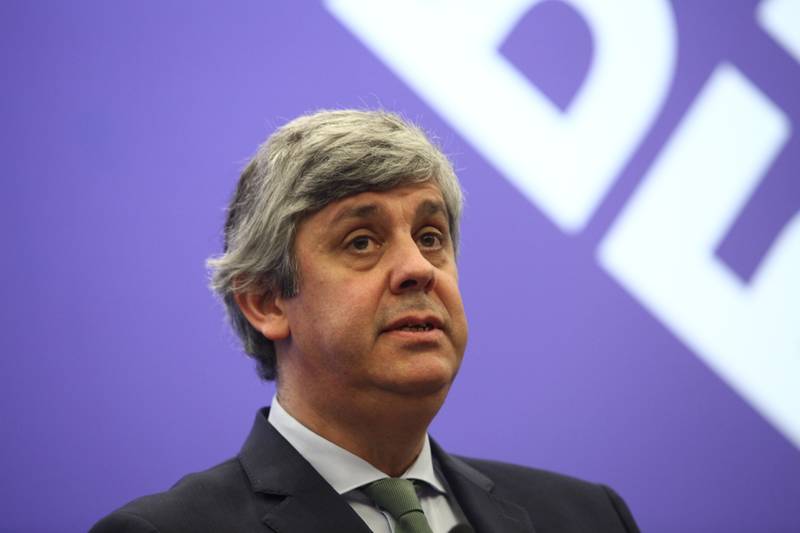How Strong is the Euro Area Firewall?
Ralitsa Kovacheva, April 3, 2012
 The eurozone firewall will amount to 800 billion euros and not a cent more. This is exactly the amount stated by German Finance Minister Wolfgang Schaeuble on the eve of the informal meeting of the eurozone finance ministers in Copenhagen on 30 March. The amount is disappointing against the background of the European Commission proposal for an increase of up to 940 billion euros and the French ambitions for a capacity of 1 trillion euros, but it was seen as sufficient by Germany and as credible by the ECB.
The eurozone firewall will amount to 800 billion euros and not a cent more. This is exactly the amount stated by German Finance Minister Wolfgang Schaeuble on the eve of the informal meeting of the eurozone finance ministers in Copenhagen on 30 March. The amount is disappointing against the background of the European Commission proposal for an increase of up to 940 billion euros and the French ambitions for a capacity of 1 trillion euros, but it was seen as sufficient by Germany and as credible by the ECB.
The markets expected larger increase, claiming that the larger the bailout fund is, the more would the pressure ease on vulnerable economies. The German position, however, is the opposite. As German Chancellor Angela Merkel repeatedly said, regardless of how much we increase the rescue fund, there will always be someone to say it is not big enough. However, according to Germany, easing market pressure will reduce the motivation of troubled economies to reform. Berlin after all conceded, agreeing the two funds (the temporary EFSF and the permanent ESM) to operate in parallel. This, together with the actions taken by the ECB, will buy the necessary time until the new rules for fiscal discipline start delivering, which will precisely be the key factor for the weakening of market pressures. However, this is a situation with many unknowns.
A matter of accounts
The decision to increase the resources of the eurozone bailout fund was taken at noon on 30 March, but its official announcement was foiled after Jean-Claude Juncker, Eurogroup president, cancelled the planned press conference. According to news agencies, he was enraged by Austrian Finance Minister Maria Fekter, because she had announced the decision to media in advance. Subsequently, Ms Fekter apologised, but it is unclear whether she managed to appease Mr Juncker. Ultimately, journalists got a statement stating that "all together the euro area is mobilising an overall firewall of approximately EUR 800 billion, more than USD 1 trillion."
on 30 March, but its official announcement was foiled after Jean-Claude Juncker, Eurogroup president, cancelled the planned press conference. According to news agencies, he was enraged by Austrian Finance Minister Maria Fekter, because she had announced the decision to media in advance. Subsequently, Ms Fekter apologised, but it is unclear whether she managed to appease Mr Juncker. Ultimately, journalists got a statement stating that "all together the euro area is mobilising an overall firewall of approximately EUR 800 billion, more than USD 1 trillion."
Actually this is not about committing new funds to the rescue mechanism (European Stability Mechanism, ESM) – the permanent rescue fund for the euro area, which will start functioning as of July 2012. The minsters extended the life of the temporary bailout fund (European Financial Stability Facility, EFSF), allowing it to operate in parallel to the ESM for one more year. Thus, the ESM will not be charged with the ongoing rescue programmes on the one hand, and on the other, it will add to its capacity the unused funds from the EFSF of around 240 billion euros.
The Eurogroup`s statement says the European Stability Mechanism will be the main instrument for funding of programmes from July 2012. For this purpose, the payment of the member states` contributions will be done at an accelerated pace, as agreed in early March. There will be two tranches of capital this year - in July and October - another two tranches will be paid in 2013 and a final tranche in the first half of 2014.
The provisional fund EFSF however, will continue to fund programmes that have been already started - these are the loans for Ireland and Portugal, as well as the second Greek loan. Its uncommitted funds, as decided by the Eurogroup, can be used for new rescue programmes. The aim is thus to ensure full loan capacity of 500 billion euros from July 2012, as the ESM will not be fully capitalised by 2014. Ultimately, the overall ceiling of the lending capacity of the two funds has been increased to 700 billion euros but by mid-2013, when only the ESM will remain, its maximum lending capacity will still be 500 billion euros.
Is this sufficient?
 One of the biggest questions is whether EU's partners in the G20 will accept the amount as sufficiently convincing, so that they can agree to increase the IMF resources. "The euro area has responded to calls from our global partners, the G20 and the BRIC countries. I trust today's decision will pave the way for an IMF decision at the Spring meetings," EU Economic and Monetary Affairs Commissioner Olli Rehn commented. The first statements by the IMF, Washington and Mexico (Mexico chairs the G20 this year) are positive, but decisions are yet to be taken.
One of the biggest questions is whether EU's partners in the G20 will accept the amount as sufficiently convincing, so that they can agree to increase the IMF resources. "The euro area has responded to calls from our global partners, the G20 and the BRIC countries. I trust today's decision will pave the way for an IMF decision at the Spring meetings," EU Economic and Monetary Affairs Commissioner Olli Rehn commented. The first statements by the IMF, Washington and Mexico (Mexico chairs the G20 this year) are positive, but decisions are yet to be taken.
On the answer to the first question, the answer to the second one largely depends - whether Europe has enough resources in case it has to rescue Spain and Italy? If look at the breakdown of the 800 billion euros firewall, it includes the nearly 100 billion euros already paid under the current rescue programmes too. Commitments to Greece, Ireland and Portugal amount to nearly 400 billion euros, including the IMF`s involvement (according to the calculations of the Centre for European Policy Studies and the European Commission), provided that Ireland and Portugal succeed to return to the financial markets in 2013 at the latest (for Greece it is not expected before 2016). However, should financial assistance to both countries be prolonged, and a third Greek bailout programme is very likely, this will put additional pressure on the rescue fund.
And what happens if a major rescue programme for Spain or Italy has to be financed? The main risk to both countries is their vulnerability to markets. According to calculations by the Centre for European Policy Studies (CEPS), by 2016 the total amount of both countries` refinancing needs will be 1 trillion 800 billion euros. Even if the ESM has to cover only half of this amount, it would need additional 600 billion euros or a total capacity of 1 trillion and 100 billion euros, the analysts argue. An additional risk stems from the potential inability of peripheral countries, Spain and Italy, to pay their contributions to the rescue fund, which will further reduce its capacity.
The biggest risk for Spain now comes mostly from the Spanish banks, that need to be  recapitalised with 50 billion euros by the end of this year. At this stage, both the Spanish authorities and the European Commission deny the need of a bailout loan for bank recapitalisation. However, the government's ability to fulfil its commitment to reduce public spending by 27 billion euros this year, as provided by the 2012 budget, is also questionable. The news has already sparked massive strikes in Spain, and projections for another economic contraction also question the possible achievement of the fiscal targets. In Rome, in turn, Mario Monti, who is considered guarantor of stability not only in Italy but in the euro area as a whole, is meeting strong resistance to his attempts to pass the necessary reforms. Moreover, his technocratic government does not have a democratic mandate and can easily lose the support of both parliament and society.
recapitalised with 50 billion euros by the end of this year. At this stage, both the Spanish authorities and the European Commission deny the need of a bailout loan for bank recapitalisation. However, the government's ability to fulfil its commitment to reduce public spending by 27 billion euros this year, as provided by the 2012 budget, is also questionable. The news has already sparked massive strikes in Spain, and projections for another economic contraction also question the possible achievement of the fiscal targets. In Rome, in turn, Mario Monti, who is considered guarantor of stability not only in Italy but in the euro area as a whole, is meeting strong resistance to his attempts to pass the necessary reforms. Moreover, his technocratic government does not have a democratic mandate and can easily lose the support of both parliament and society.
 Klaus Regling | © Council of the EU
Klaus Regling | © Council of the EU Mario Centeno | © Council of the EU
Mario Centeno | © Council of the EU Mario Centeno | © Council of the EU
Mario Centeno | © Council of the EU